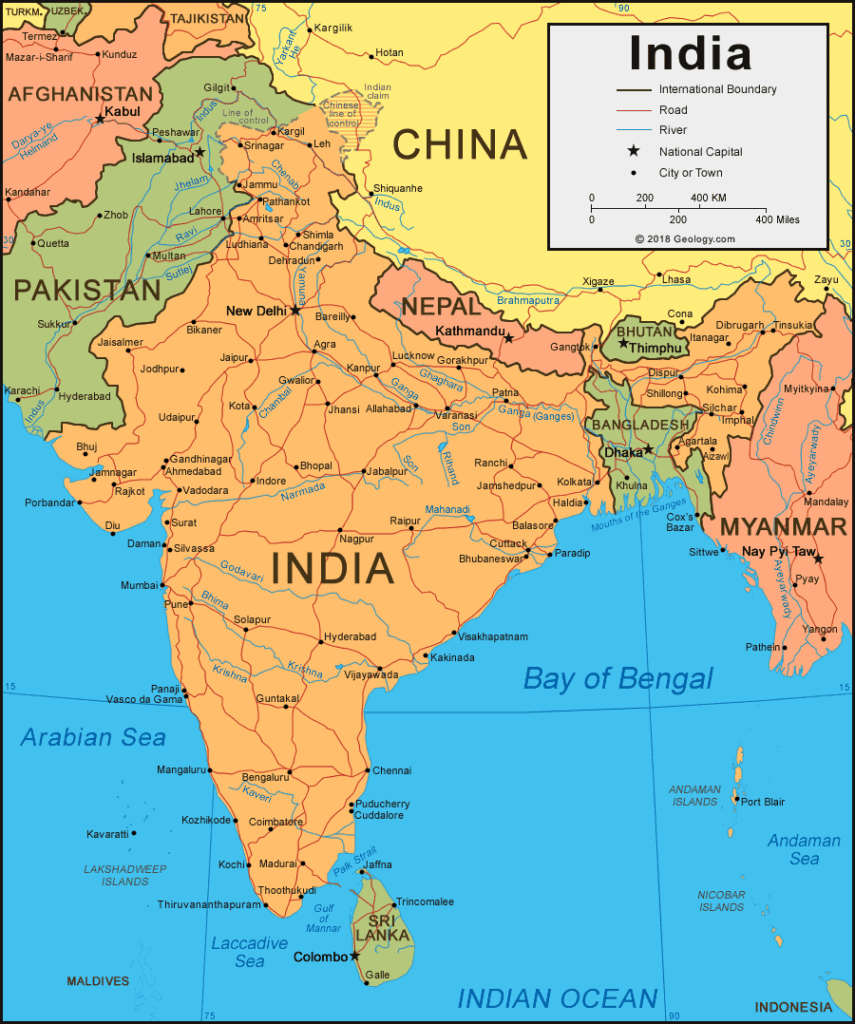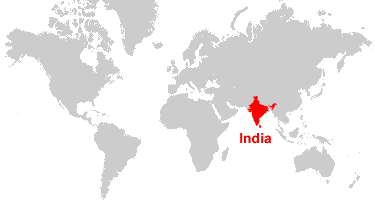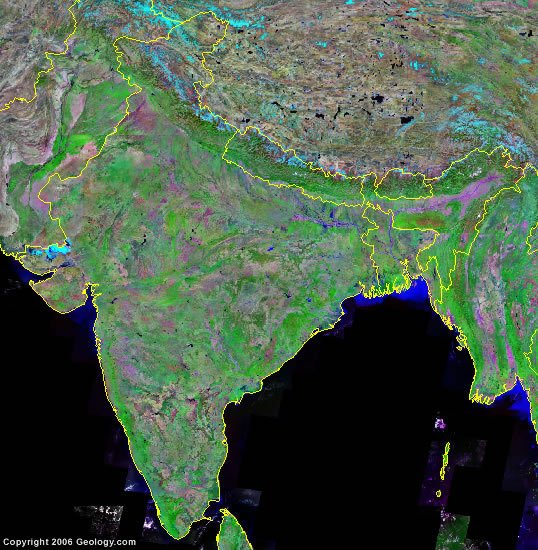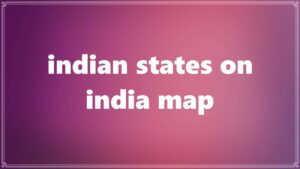Indian States on India Map: Discover the diverse and vibrant Indian states on India map, their cultural heritage, geographical features, and tourist attractions.
India has 28 states and 8 union territories, and each one has its own character. The country is known for its rich cultural tapestry and varied landscapes. If you look at a map of India and look at these Indian states, you can start an amazing journey through history, culture, and natural beauty.
Indian States on India Map
Indian States on India Map: India is a great example of the complexity and beauty of human society because of its wide range of cultures, large size, and historical importance. Getting to know the states that make up this huge country is essential for knowing it. Each state adds its own flavour to the national mosaic.

This article goes into great depth about the Indian states, giving a fascinating summary of their locations, cultural importance, and historical background.
Indian States on India Map: India is in the southern part of Asia. The south is bounded by the Arabian Sea, the Laccadive Sea, and the Bay of Bengal. The north is bounded by Bhutan, Nepal, China, and Pakistan. The east is bounded by Bangladesh and Myanmar (Burma).
Where is India?

Indian States on India Map: India is very diverse, and not just in terms of its landscapes. Its culture history is also very diverse. There are a lot of different customs, festivals, and foods in each state, which give tourists a glimpse into its history and heritage.
India States and Union Territories Map

Indian States on India Map: The political maps on this page show the 1972 Line of Control and other boundary lines as shown on maps from the CIA World Factbook. These are the main sources we use to find out about US-recognized political borders.
India Satellite Image

India Cities Name List
Agartala, Agra, Ahmedabad, Aizawl, Allahabad, Amritsar, Balasore, Bengaluru, Bareilly, Bhopal, Bhubaneswar, Bhuj, Bikaner, Chandigarh, Chennai (Madras), Coimbatore, Cuddalore, Cuttack, Daman, Dehradun, Dibrugarh, Dispur, Diu, Gandhinagar, Gangtok, Gorakhpur, Guntakal, Gwalior, Haldia, Hyderabad, Imphal, Indore, Itanagar, Jabalpur, Jaipur, Jaisalmer, Jammu, Jamnagar, Jamshedpur, Jhansi, Jodhpur, Kakinada, Kanpur, Kargil, Kavaratti, Kochi (Cochin), Kohima, Kolkata (Calcutta), Kota, Kozhikode, Leh, Lucknow, Ludhiana, Madurai, Mangaluru, Mumbai (Bombay), Nagpur, Nagpur, New Delhi, Panaji, Paradip, Pathankot, Patna, Porbandar, Port Blair, Puducherry, Pune, Raipur, Rajkot, Ranchi, Shillong, Silchar, Silvassa, Shimla, Solapur, Srinagar, Surat, Thiruvananthapuram, Thoothukudi, Tinsukia, Udaipur, Vadodara, Varanasi (Benares), Vasco da Gama, Vijayawada, and Visakhapatnam.
Indian Region List
Northern Region:
States like Jammu and Kashmir, Himachal Pradesh, Punjab, Haryana, Uttarakhand, Uttar Pradesh, and Delhi are in the northern part of India. This area is known for having a wide range of landscapes, from the snow-covered Himalayas in Uttarakhand and Himachal Pradesh to the lush plains of Punjab and Haryana.
Delhi, the country’s national capital, is the political and cultural center of the country. Uttar Pradesh, on the other hand, is important in history as the home of ancient civilizations and holy pilgrimage sites like Ayodhya and Varanasi.
Western Region:
Rajasthan, Gujarat, Maharashtra, and Goa are some of the western states of India that have a mix of old and new. With its beautiful forts and castles, Rajasthan shows off the state’s royal history. Gujarat, on the other hand, is known for its lively culture and strong industrial economy.
Maharashtra is both an economic force and a melting pot of different cultures. It is home to the busy metropolis of Mumbai. People come from all over the world to visit Goa, which has beautiful beaches and a Portuguese feel.
Eastern Region:
West Bengal, Bihar, Jharkhand, Odisha, and the northeastern states are in the eastern part of India. These states are known for their natural resources and cultural history. The capital of West Bengal is Kolkata. The state is known for its contributions to literature and art, as well as its love of sports and sweets.
Many people call Bihar the “cradle of civilization,” and it is home to important Buddhist and Hindu sites like Nalanda and Bodh Gaya. Assam, Meghalaya, Manipur, Mizoram, Nagaland, Tripura, Arunachal Pradesh, and Sikkim are some of the northeastern states that are famous for their beautiful scenery, unique cultural practices, and large groups of people from different backgrounds.
Southern Region:
Indian states like Andhra Pradesh, Telangana, Karnataka, Tamil Nadu, Kerala, and the union territories of Puducherry and Lakshadweep are in the southern part of the country. Each state in this area has its own unique culture and makes a big difference in India’s social and economic growth.
Kerala, also called “God’s Own Country,” is known for its calm backwaters and lush greenery. Tamil Nadu, also called the “Land of Temples,” is known for its Dravidian architecture and traditional arts.
Central Region:
Indian states in the middle, like Madhya Pradesh, Chhattisgarh, and the union territories of Dadra and Nagar Haveli and Daman and Diu, are famous for their beautiful nature and long past.
India’s old past can be seen in Madhya Pradesh, which has wildlife parks and archaeological sites like Khajuraho and Sanchi. Chhattisgarh is slowly becoming a tourist location. It is known for its tribal culture and dense forests.
Conclusion
Indian States on India Map: India’s map is like a tapestry, with the different states adding their own unique cultural, historical, and physical elements. Learning about the locations and cultural importance of Indian states can help you understand this fascinating country better. While India continues to change and accept modernity while still valuing its traditions, its map will always show its rich tapestry of unity and diversity. Indian States on India Map
FAQs (Frequently Asked Questions)
Q. What is the largest state in India by area?
A. Uttar Pradesh holds the title of the largest state in India by area.
Q. Which Indian state is known as the “Land of Five Rivers”?
A. Punjab is famously known as the “Land of Five Rivers,” referring to the five major rivers that flow through the region.
Q. What is the capital of India?
A. New Delhi serves as the capital city of India, situated in the National Capital Territory of Delhi.
Q. How many union territories does India have?
A. India comprises eight union territories, each governed directly by the central government.
Q. Which state is renowned for its tea plantations?
A. Assam, located in northeastern India, is renowned for its lush tea plantations, producing some of the finest tea in the world.
Q. What is the official language of India?
A. Hindi, along with English, serves as the official language of India, fostering linguistic diversity across the nation.
